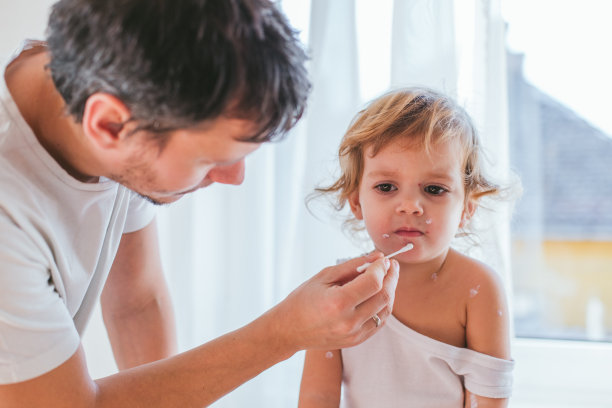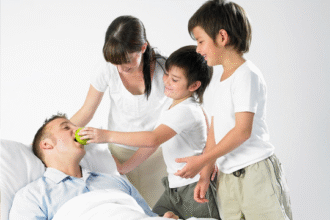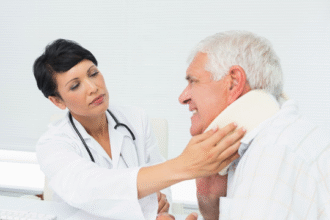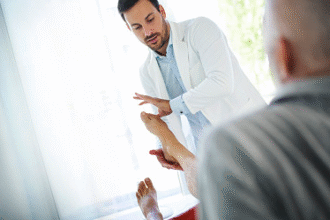Chickenpox (Varicella)
Varicella‑zoster virus (VZV) causes chickenpox — a highly contagious illness marked by an itchy, vesicular rash and mild systemic symptoms in most people. Severe disease can occur in infants, pregnant people, adults, and the immunocompromised.
Transmission, Incubation, and Infectious Period
- Transmission: airborne (fine respiratory particles) and direct contact with fluid from skin lesions; less commonly via large droplets.
- Incubation: typically 10–21 days (about 14 days).
- Infectious: from 1–2 days before rash onset until all lesions are crusted. Vaccinated people with breakthrough varicella can still transmit.
Clinical Features
- Classic varicella: crops of pruritic lesions in different stages simultaneously (macules → papules → vesicles → crusts). “Dewdrop on a rose petal” vesicles are characteristic.
- Distribution: centripetal (more on trunk/face than on extremities); mucosal lesions can occur (mouth, conjunctiva, genitals) and may ulcerate.
- Systemic symptoms: low‑grade fever, malaise, sore throat; generally mild in healthy children.
Complications and Severe Disease
- Bacterial superinfection of skin lesions (e.g., impetigo, cellulitis), dehydration.
- Pneumonia (more common in adults and during pregnancy), cerebellitis/encephalitis, hepatitis, thrombocytopenia.
- High‑risk groups: infants, pregnant people, adults, the immunocompromised, and those with chronic lung disease or on chronic salicylates.
Pregnancy and Neonatal Considerations
- Maternal infection in early pregnancy can rarely cause congenital varicella syndrome (limb hypoplasia, cicatricial skin scarring, ocular and neurologic abnormalities).
- Peripartum infection (maternal rash onset 5 days before to 2 days after delivery) risks severe neonatal varicella; neonatal VariZIG and antiviral management are indicated.
Diagnosis
- Usually clinical. When needed, confirm with PCR/NAAT from lesion swabs or scabs. Serology can help assess immunity.
Treatment
Supportive care (most uncomplicated cases)
– Antipyretics/analgesics: acetaminophen as first choice; avoid aspirin/salicylates due to Reye syndrome risk.
– Itch relief: oral antihistamines; calamine or colloidal oatmeal baths; keep nails short and skin clean; gentle bathing is fine.
– Hydration and rest; monitor for secondary bacterial infection.
Antivirals (start as early as possible, ideally within 24 hours of rash)
– Otherwise healthy children: consider oral acyclovir if started within 24 hours to modestly shorten illness; not routinely needed for mild disease.
– Adolescents and adults, or those at increased risk (chronic skin/lung disease, on chronic salicylates, secondary household cases):
– Acyclovir 800 mg orally five times daily for 5 days, or
– Valacyclovir 1 g orally three times daily for 5 days, or
– Famciclovir 500 mg orally three times daily for 5 days (adult dosing).
– Severe disease or immunocompromised: IV acyclovir 10 mg/kg every 8 hours for 7–10 days (adjust for renal function). Manage in consultation with specialists.
Antibiotics are for bacterial superinfection only; routine topical antiseptics like gentian violet are not required.
Vaccination (Active Immunization)
- Live attenuated varicella vaccine (separate or MMRV).
- Routine schedule: 1st dose at 12–15 months; 2nd dose at 4–6 years.
- Catch‑up: if <13 years and unvaccinated, 2 doses ≥3 months apart; if ≥13 years, 2 doses ≥4–8 weeks apart.
- Contraindicated in pregnancy and some immunocompromised conditions; vaccinate postpartum if non‑immune.
Post‑Exposure Prophylaxis (PEP)
- Vaccine: give to susceptible, eligible people ideally within 3–5 days of exposure to prevent or blunt disease; still vaccinate after 5 days to protect against future exposures.
- VariZIG (varicella‑zoster immune globulin): give as soon as possible and within 10 days of exposure to high‑risk susceptible individuals (e.g., immunocompromised persons; pregnant people without evidence of immunity; newborns whose mothers develop varicella 5 days before to 2 days after delivery; certain hospitalized premature infants). Follow local dosing guidance.
- Exclude susceptible contacts from high‑risk settings from days 8–21 after exposure (extend to 28 days if VariZIG given).
Isolation and Return to Activities
- Stay home and avoid close contact until all lesions are crusted (and no new lesions appear). In healthcare settings, use airborne and contact precautions.
When to Seek Medical Care
- Difficulty breathing, persistent high fever, severe headache/confusion, dehydration, rapidly spreading redness or pus from lesions, or if you are pregnant/immunocompromised and develop symptoms or an exposure.
Educational information only; follow local public health guidance and consult a clinician for individualized care.







